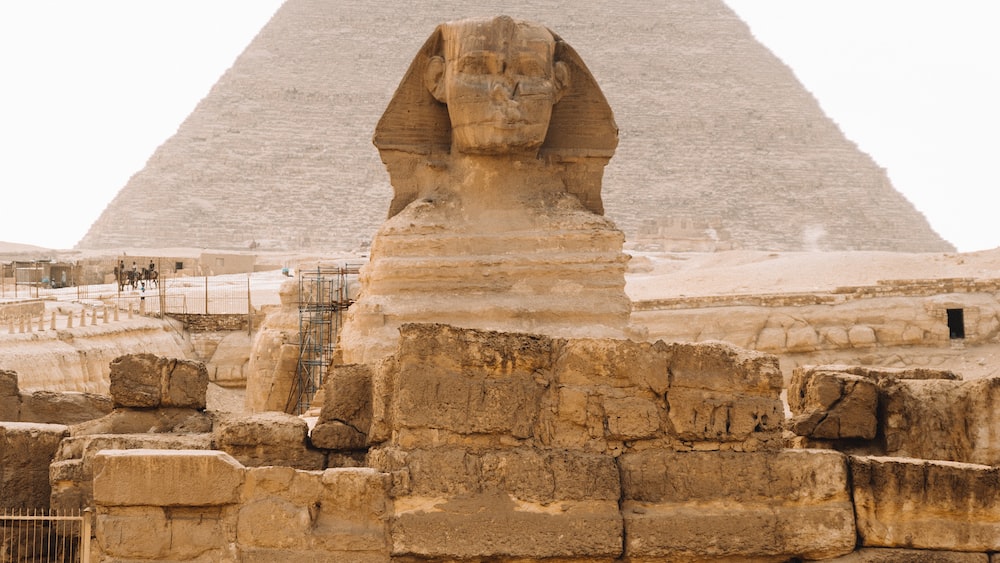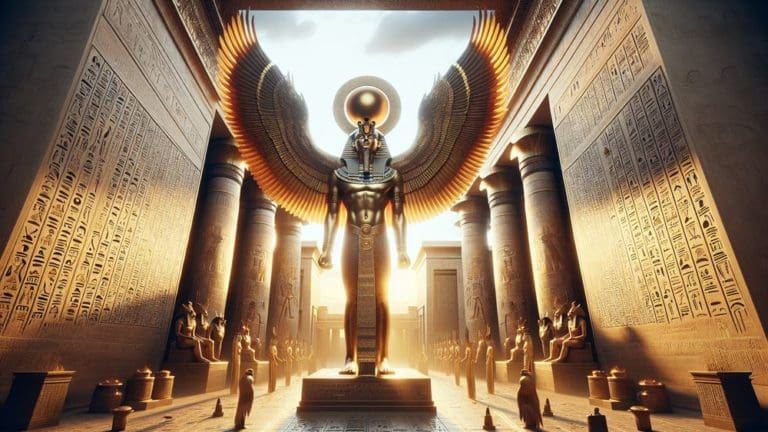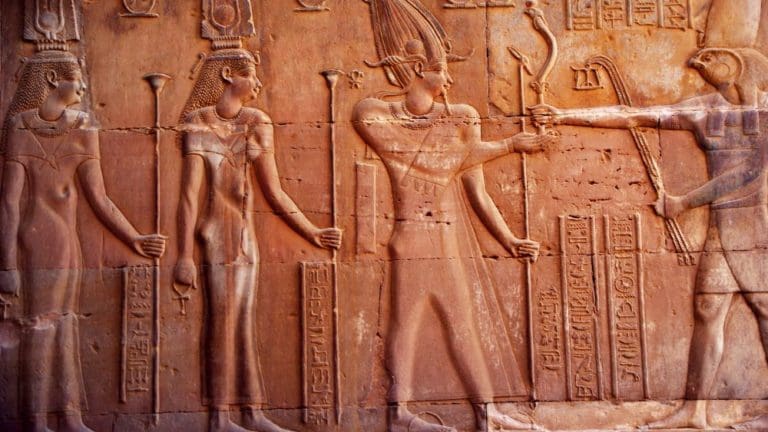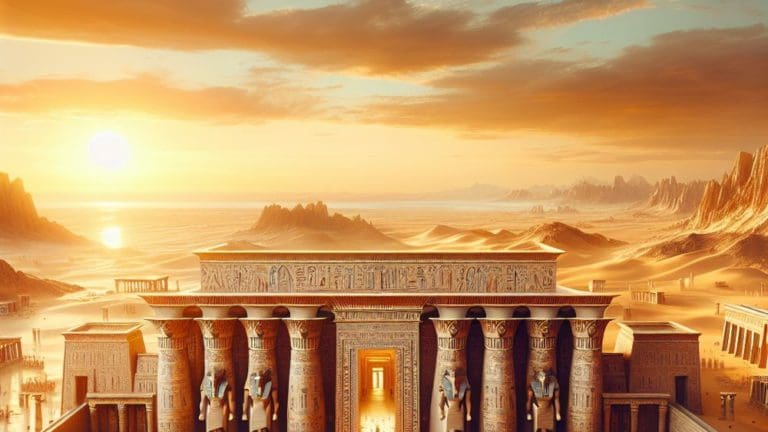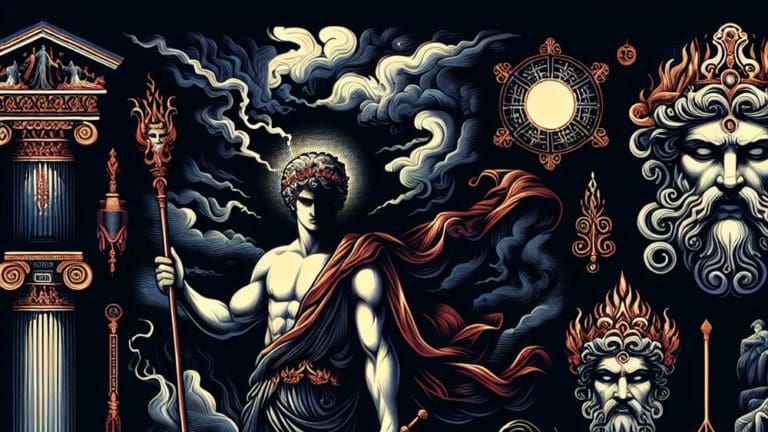Geb: The Egyptian Earth God | Explore The Mythology And Significance
Geb: The Egyptian Earth God | Explore The Mythology And Significance
Ever imagined how the Earth beneath your feet was perceived in ancient times? Stepping back into the world of ancient Egyptian mythology, we stumble across Geb, the Egyptian earth god. A figure cloaked in mystery, Geb invites us on an adventure into the sacred contours of this ancient civilization. Diving into his story, we’ll unearth the importance of this deity, unveil layers of mythico-historical narratives, and explore the very roots of our phenomenal world.
The wonders of Geb start but not stop with him being the personification of Earth – bearing on his shoulders the role of the earth god in ancient Egypt. In this journey that weaves history with imagination, we’ll be spelunking through not only the mountains and valleys reflected in Geb’s significance but also the hidden coves and caves of knowledge that lie beneath his mythology.
Think of Geb as the keys to a treasure chest, waiting for your curiosity to unlock and unearth the mysteries stored for millennia. Ready to rattle some ancient dust off history? Then join me on this fascinating exploration!
Who is Geb?
As the early morning sun casts long shadows over the Nile, an enduring figure within the ancient Egyptian Pantheon, Geb – the Egyptian earth god, surveys his domain. A deity with centuries of history and mythology etched into his very essence, Geb is distinct among his divine brethren due to his role as the God of the Earth.
The Egyptian God Geb
First, imagine the earth – not as a mere planet but as a living, breathing entity. That’s the embodiment of Geb, the ancient Egyptian earth god. His legends stretch back as far as the Old Kingdom (circa 2690-2180 BCE), where he was considered the ruler of the world, a deity enveloped in every ruffle of the land, every grain of sand beneath your feet.
In physical depictions, Geb is often represented sprawled across the ground, donning a green body – a nod to the fertile lands gracing the Nile banks. His arms and legs spread wide, emulating mountains and valleys, binding in himself a visual representation of the bountiful earth.
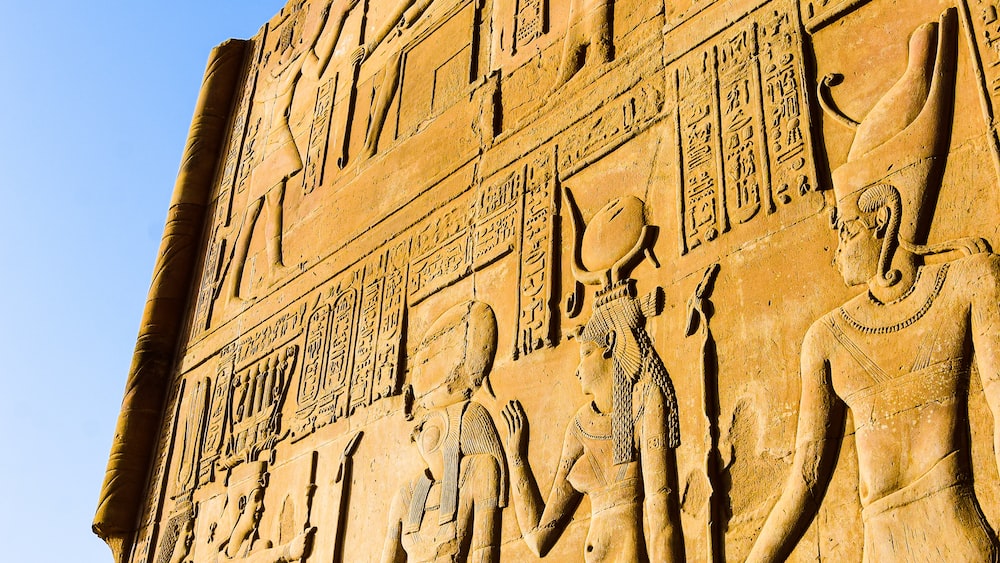
Imagine the earth as a living, breathing entity, embodied by the ancient Egyptian earth god Geb, who represents the ruler of the world and the bountiful earth.
Geb’s Role in Egyptian Mythology
Diving deeper into the annals of ancient Egyptian mythology, we find Geb ensnared in a network of tantalizing storylines and complex relationships. Regarded as one of the Heliopolitan gods, Geb held a distinct place within the renowned Ennead group, which incorporated nine primal deities of Heliopolis, a major center for the worship of the sun god Ra.
His role was more than symbolic – Geb acted as an integral bridge between the divine and mortal realms. He was attributed as the judge of humans’ souls, delivering the verdict whether the deceased were worthy of afterlife. The mysteries shrouding Geb thus spread across not only space, symbolized by his dominion over the earth, but also the realms of life and death, reinforcing his importance in the ancient Egyptian cosmology.
The Mythology of Geb
Deeper into the Shai, the ancient Egyptian concept of destiny, we embark on an exploration of the fabric that sews together Geb’s mythology. Such mythology not only offers intriguing insights into Geb’s identity and relationships but also crafts an overarching narrative that helped Egyptians make sense of their world.
The Creation Story and Geb’s Origin
The genesis of Geb’s tale is intertwined with the creation narrative of Egyptian mythology. In the beginning, there was only the dark, swirling chaos of Nun, the primordial ocean. From this chaos emerged Atum, the self-created deity who then begot two offspring – Shu, the god of air and Tefnut, the goddess of moisture.
Shu and Tefnut consequently gave birth to Geb, the earth and Nut, the sky. Their union, however, was so passionate that they remained locked in a constant embrace, causing a celestial standstill. In a bid to restore balance, Shu intervened, separating Geb and Nut, and thus ushering in the succession of day and night, and the existence of the world as we know it.
Geb’s Family and Relationships
Geb and Nut’s separation didn’t end their intimate relations, indexing a richly interconnected web of familial relations in Egyptian mythology. The pair had four children: Osiris, Isis, Seth, and Nephthys. This divine family was cardinal to Egyptian cosmology, each member assuming a pivotal role, and their interactions forming core narratives that graced the many inscriptions of ancient Egypt.
The divine family of Geb and Nut, with their four children, played a crucial role in Egyptian cosmology and their interactions formed the core narratives of ancient Egypt.
The Powers and Significance of Geb
The mighty Geb, formidable and awe-inspiring, was a deity of seismic proportions in the Egyptian pantheon. His role as the god of earth came with an entourage of powers and responsibilities. Diving into these elements helps us comprehend his significance in ancient Egyptian civilization.
Geb’s Powers and Abilities
Venturing into the realm of ancient Egypt, as we embrace the myth and lore around Geb, it is the Egyptian Earth God’s mystical powers that captivate our attention. According to eminent scholar Shaw (2002), Geb held dominion over the earth, its vegetation, animals, and minerals. His ultimate power lay in his ability to cause earthquakes, which the Egyptians believed reflected his laughter.
Yet, Geb was not all destructive force; he also owned an aspect of bountiful fertility. His close association with the earth made him the guardian of crops and harvests. For a civilization born by the river Nile, this trait of Geb becomes highly symbolic and vital, fostering their agricultural dexterity.
The Symbolism and Importance of Geb in Ancient Egypt
Unfolding the layers of Geb’s mythology, symbolism is deeply intertwined with this geb egyptian goddess’s persona. Being an earth deity, Geb was symbolically depicted as a man lying under a sky goddess, representing the celestial dome. His feathered crown was an embodiment of the air-filled space between the earth and the sky.
Equally, perhaps even more striking was his accession to the throne as the king of the earth. Geb was believed to dictate a moral order, offering judgements in disputes, and playing a role in the weighing of hearts – the ancient Egyptian concept of judgement after death. Thus, Geb held a pivotal place in ancient Egyptian lives, offering them guidance in life and hope in the hereafter.
Worship and Depictions of Geb
Turning our lens towards the worship and depictions of Geb reveals richer facets of his enigma. The ceremonies, rituals, and artistic renditions associated with this deity underline not only the reverence for this god but also the profound aesthetic sense of the ancients.
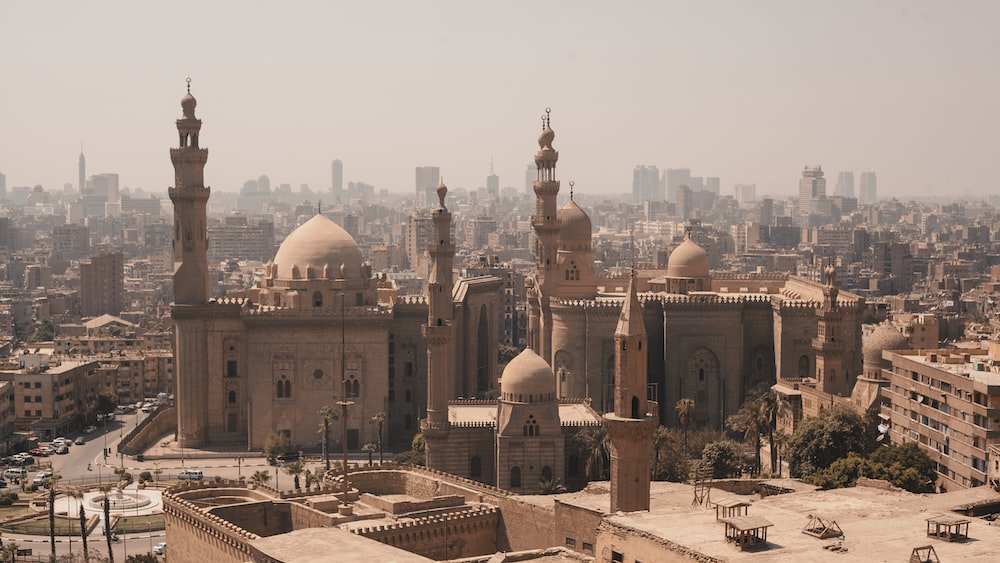
Geb’s Worship in Ancient Egypt
In the land of the pharaohs, the worship of Geb was not confined to any single city. His worship permeated throughout the Egyptian landscape, nurtured by his strong association with the earth.
Various temples and monuments displayed inscriptions and depictions dedicated to Geb, demonstrating his integral role in religious practices. His hallowed status indicated by the rituals of offering food and wine, and how frequently he was invoked in daily prayers.
Artistic and Symbolic Depictions of Geb
Artistic renditions were potent tools of expression in ancient Egypt, and Geb was often grandly depicted in temple murals, carved statues, and ritual artifacts. He was portrayed as a man lying beneath Nut, the sky goddess, with his body covered in green vegetation or soil, reflecting his link to the earth and fertility.
Remarkably, Geb is also seen holding the Ankh – the symbol of life, indicative of his role as a sustainer. Furthermore, his depictions alongside the “Was-scepter” symbolize power and dominion, often as the ruler of the earth. These rich and vivid artistic portrayals serve to underscore Geb’s multifaceted role in Egyptian mythology and daily life.
Geb, the Egyptian god, was depicted in various artistic forms, symbolizing his connection to the earth, fertility, life, power, and dominion.
Geb in the Context of Egyptian Pantheon
The Egyptian Pantheon stands as a vibrant and intricate web of deities, with Geb playing a central role in this divine framework linked by complex relationships and shared roles.
Geb and the Ennead Group
Positioning Geb within the context of the Ennead, a group of nine primeval deities, uncovers further dimensions of his identity. Geb is born from the union of Shu, the god of air, and Tefnut, the goddess of moisture. As the third generation of gods in the Ennead, Geb assumes the role of the earth god, further solidifying his place in the cosmic order.
In the intriguing narrative of the Heliopolitan cosmogony, Geb and his sister Nut, the sky goddess, are separated by their father, Shu, setting the stage for the creation of the earth and sky, marking yet another significant milestone in Geb’s mythology.
Finally, Geb’s own offspring enrich the pantheon of Egyptian gods, extending their influence and legacy. They include Osiris, Isis, Seth, and Nephthys, each wielding essential roles and dominions, echoing Geb’s own significant stature within the Egyptian pantheon.
Geb’s Interaction with Other Gods and Goddesses
In the teeming and colorful epic of Egyptian mythology, Geb, the earth god was more than just the personification of the earth. Pivotal to the tales, he interacted frequently with his formidable pantheon of siblings and other deities. His interactions were not merely cordial exchanges, but were often laced with intricate familial relationships, alliances, disputes, and power dynamics that shaped the cosmos in the minds of the ancient Egyptians.
Take for instance, Geb’s relationship with his wife and sister, Nut, the sky goddess. Their cyclical interplay forms the basis of day and night – when Nut is above Geb it is day, when she descends to him, it is night. Not only that, these relationships had significant implications. The restriction placed on Nut to bear children by their father, Shu, saw Geb intervening on many occasions, illustrating his significant role and interaction within the Egyptian godly realm.
FAQs
In the fascinating journey of understanding Geb, the Egyptian Earth God, questions abound. Let’s delve into the heart of these curiosities with these Frequently Asked Questions (FAQs):
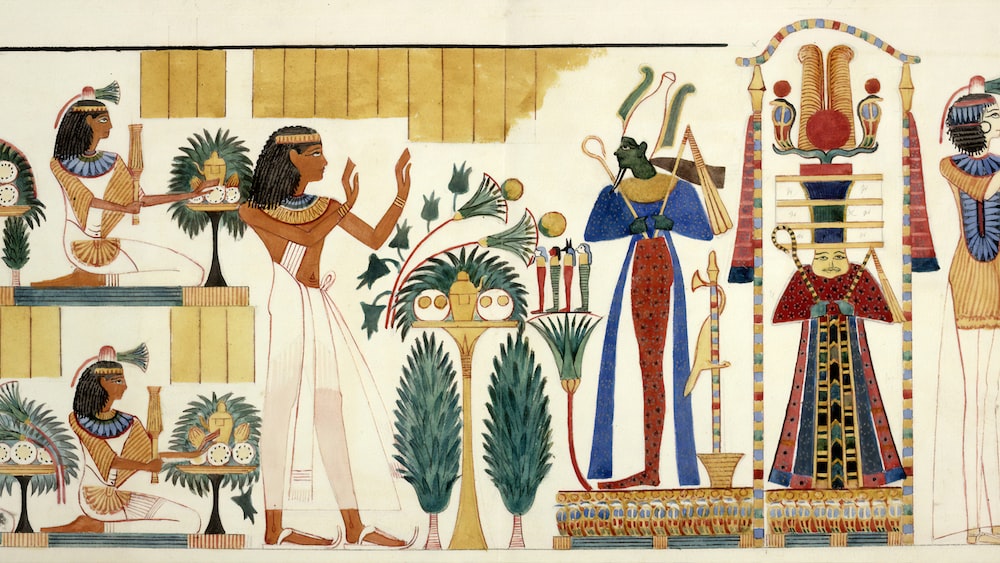
1. What powers did Geb have?
In the lore of ancient Egypt, Geb’s powers were significantly tied to the earth. As the god of the earth, Geb had the authority to cause earthquakes, symbolizing his ability to change the very terrain of the world. Thus, Geb possessed formidable powers, reflecting the Egyptians’ deep respect for the vital and often tumultuous nature of their land.
2. Is Geb married to Nut?
Yes, in the Egyptian mythology, Geb was married to Nut. Nut, the sky goddess, was both Geb’s wife and sister, a coupling which is a common theme in many mythologies. The night sky represented by Nut comes to marry the Earth, represented by Geb, every evening, causing darkness.
3. What does Geb represent?
Geb represents the earth in Egyptian mythology. He portrays a magnetic interplay of life, growth, and fertility – the secrets held beneath the earth’s surface. As an earth deity, Geb symbolizes the nurturing, fertile aspect of the earth, often depicted with green skin to symbolize vegetation and growth.
4. Why is Geb important?
Geb’s importance lies in his association with the earth and all that sprouts from it. He symbolizes fertility, life, and renewal. Not only this, Geb played a significant part in the laws of Ma’at, deciding the fate of humans after their death. He is a god who governs over daily life and the afterlife, rendering him central to ancient Egyptian spiritual understandings.
Conclusion
Unveiling the mysteries surrounding Geb, the Egyptian Earth God, unearths a magnificence that resides in each crevice of ancient Egyptian mythology. The tales of Geb reflect the complexities of human relationships, the transition of times, and the unfathomable force of the natural world. Through Geb, the Egyptians connected their understanding of the natural world with a sense of spiritualism, cyclical renewal, and afterlife. Geb ultimately stands as a testament to their reverence and respect for the earth’s abundance and the mysteries it holds.
Whether Geb is truly a god, a part of an ancient civilization’s imagination, or if he just embodies the symbolism of fertility and renewal, we can all appreciate the insights his tales provide. They serve as a portal into the minds and beliefs of an ancient culture. My hope is that our exploration might have inspired you to delve deeper into the multilayered nuances of ancient Egyptian mythology, to uncover the grandeur of their past for yourself. Remember, every tiny fragment of history unraveled is a step closer to understanding our shared human heritage.
As Geb’s sibling Nut envelops the sky, let her blanket of stars guide you on this extraordinary journey of discovery. Till our next adventure, I’m Cedric, signing off with a heart full of excitement for the narratives yet to be unraveled. Keep exploring!

